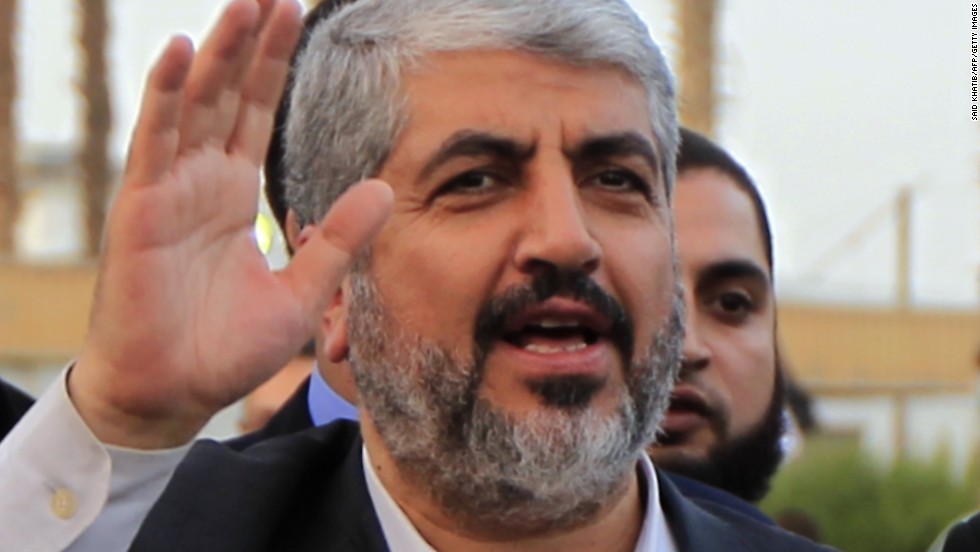Historical Context and Leadership: Israel Hamas Leader

The relationship between Israel and Hamas has been marked by conflict and tension since Hamas’s emergence in the late 1980s. This complex dynamic is rooted in a long history of political and territorial disputes, fueled by divergent ideologies and competing narratives. Understanding the historical context and leadership of Hamas is crucial to grasping the ongoing challenges in the region.
The Historical Relationship
The historical relationship between Israel and Hamas is deeply intertwined with the Israeli-Palestinian conflict. Hamas, an Islamic resistance movement, emerged in the late 1980s as a response to the Israeli occupation of the Gaza Strip and the West Bank. Its founding charter explicitly calls for the destruction of Israel and the establishment of an Islamic state in its place.
The first major turning point came in 1993 with the signing of the Oslo Accords, which aimed to establish a Palestinian state alongside Israel. While the Palestinian Liberation Organization (PLO) accepted the accords, Hamas rejected them, viewing them as a betrayal of the Palestinian cause. This rejection led to a period of intense conflict, including suicide bombings and military operations by Hamas against Israeli targets.
In 2006, Hamas won a landslide victory in Palestinian parliamentary elections, marking a significant shift in the political landscape. Israel responded by imposing a blockade on Gaza, which has had a devastating impact on the Palestinian population. The blockade, along with numerous military operations, has exacerbated the humanitarian crisis in Gaza and further fueled tensions between Israel and Hamas.
Leadership Styles and Ideologies
Hamas has been led by a series of prominent figures, each with their own leadership style and ideological perspectives.
Sheikh Ahmed Yassin
Sheikh Ahmed Yassin, the founder and spiritual leader of Hamas, was known for his charisma and his unwavering commitment to the Palestinian cause. He was assassinated by Israel in 2004, but his legacy continues to inspire many Palestinians. Yassin’s ideology was deeply rooted in Islamic fundamentalism, emphasizing the importance of jihad and resistance against Israeli occupation.
Khaled Mashal
Khaled Mashal, the current leader of Hamas’s political wing, is known for his pragmatic approach to politics. He has sought to build international alliances and has engaged in negotiations with Israel, albeit with limited success. While maintaining Hamas’s core ideology, Mashal has emphasized the need for political solutions to the conflict.
Ismail Haniyeh
Ismail Haniyeh, the leader of Hamas’s government in Gaza, is considered a hardliner. He is known for his strong opposition to Israel and his commitment to armed resistance. Haniyeh has been a vocal critic of the Oslo Accords and has consistently called for the destruction of Israel.
Evolution of Hamas’s Strategies, Israel hamas leader
Hamas’s political and military strategies have evolved over time in response to changing circumstances.
Early Years: Resistance and Intifada
In its early years, Hamas focused on armed resistance against Israel, primarily through suicide bombings and attacks on Israeli civilians. This strategy was fueled by the first Intifada, a popular uprising against Israeli occupation that began in 1987.
Post-Oslo Accords: Rejection and Political Participation
Following the Oslo Accords, Hamas rejected the peace process and continued its armed struggle against Israel. However, the movement also began to engage in political activities, participating in Palestinian elections and establishing a social welfare network in Gaza.
Post-2006: Governance and International Relations
After winning the 2006 Palestinian elections, Hamas assumed control of the Gaza Strip. This marked a significant shift in the movement’s focus, as it now had to manage the day-to-day affairs of a territory under its control. Hamas has also sought to build international alliances and engage in diplomacy, though its relationship with the international community remains strained due to its rejection of Israel’s right to exist.
Impact of International Pressure and Sanctions
International pressure and sanctions have had a significant impact on Hamas’s leadership.
Economic Sanctions and Blockade
Israel’s blockade of Gaza, along with international economic sanctions, has severely hampered Hamas’s ability to govern and provide basic services to its people. The blockade has created a humanitarian crisis in Gaza, with widespread poverty, unemployment, and lack of access to essential goods and services.
International Isolation
Hamas is widely considered a terrorist organization by many countries, including the United States and the European Union. This designation has led to international isolation, making it difficult for Hamas to raise funds and build international support.
Targeted Assassinations
Israel has carried out numerous targeted assassinations of Hamas leaders, including Sheikh Ahmed Yassin and other prominent figures. These assassinations have weakened Hamas’s leadership and have had a chilling effect on the movement’s operations.
Israel hamas leader – The conflict between Israel and Hamas continues to escalate, with both sides facing heavy losses. Amidst the international turmoil, a different kind of controversy has been brewing in Nassau County, New York, where officials have decided to ban masks in public spaces.
While the decision has been met with mixed reactions, it highlights the varied approaches to public health and safety in the face of global crises. The Israel-Hamas conflict, meanwhile, remains a stark reminder of the human cost of war and the need for diplomatic solutions.
The ongoing conflict between Israel and Hamas has been a source of tension for decades. It’s hard to imagine the leaders of these groups taking a break from the turmoil, perhaps to relax with a cup of tea on a vintage telephone table with chair.
Of course, that’s just a whimsical thought, as the reality is that the conflict continues to impact the lives of millions.
